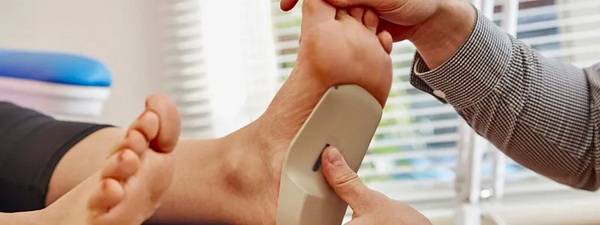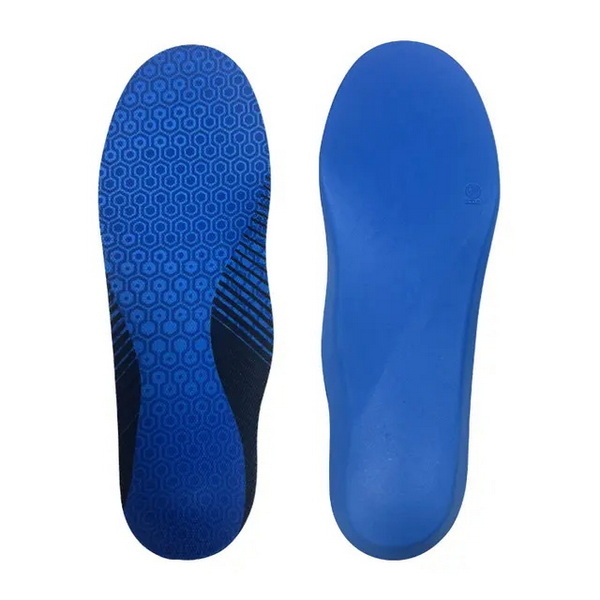Views: 222 Author: Amanda Publish Time: 2025-09-10 Origin: Site











Content Menu
● What Are Orthopedic Insoles?
● How Do Orthopedic Insoles Work?
● Benefits of Orthopedic Insoles
>> Pain Relief
>> Injury Prevention and Stability
>> Enhanced Athletic Performance
● Scientific Evidence Supporting Orthopedic Insoles
>> Custom-Made Orthopedic Insoles
>> Over-the-Counter Orthopedic Insoles
>> By Function
● When Should You Use Orthopedic Insoles?
● Proper Usage and Maintenance
● FAQ About Orthopedic Insoles
>> 1. What distinguishes custom-made from over-the-counter orthopedic insoles?
>> 2. How quickly can I expect results from using orthopedic insoles?
>> 3. Can orthopedic insoles help with knee or lower back pain?
>> 4. Are orthopedic insoles beneficial for athletes?
>> 5. How often should orthopedic insoles be replaced?
Orthopedic insoles have become an essential solution for a variety of foot problems, postural corrections, and pain relief needs. As a leading Chinese manufacturer providing OEM orthopedic insole services to international brands, wholesalers, and producers, understanding the benefits and scientific backing of orthopedic insoles is vital. This article explores the question: Do orthopedic insoles really work? It covers the types, functions, benefits, biomechanics, and current evidence to support their value.

Orthopedic insoles, or orthotics, are specially designed shoe inserts manufactured to provide support, alignment correction, and cushioning to the feet. They help regulate foot motion, support the medial arch, distribute pressure, and alleviate stress on foot tissues. Orthopedic insoles are widely used to address a range of conditions such as flat feet, plantar fasciitis, heel spurs, metatarsalgia, and even to prevent injuries in athletes.
There are two main types:
- Custom-made orthopedic insoles, tailored according to an individual's foot shape and biomechanics by healthcare professionals.
- Over-the-counter orthopedic insoles, which are pre-manufactured to address common foot support needs and are more affordable.
Orthopedic insoles alter the biomechanics of the foot and lower limbs by providing structural support and correcting abnormal movement patterns. Specific ways they function include:
- Supporting the foot arches to prevent collapse and reduce strain
- Redistributing plantar pressure to reduce focal points of pain
- Enhancing shock absorption to protect joints and muscles
- Improving alignment of the ankle, knee, and hip joints to encourage better posture
- Modifying gait to reduce excess pronation or supination, lessening injury risk
Scientific studies show that orthopedic insoles reduce pain and improve functional mobility in many users. For instance, those with plantar fasciitis reported substantial relief after using custom orthopedic insoles.
Orthopedic insoles provide significant benefits that extend beyond foot comfort:
Many users experience reduced foot pain, especially in cases of plantar fasciitis, heel spurs, and metatarsalgia. Insoles help by supporting foot structures and limiting the aggravation of sensitive tissues.
By correcting foot alignment and redistributing pressure, orthopedic insoles increase stability during walking, running, or standing. This prevents frequent injuries such as ankle sprains, stress fractures, and muscle fatigue, particularly in athletes or workers standing for extended periods.
Feet are the foundation of body posture. Proper alignment via orthopedic insoles transfers to better knee, hip, and back positioning, alleviating chronic pain linked to poor posture.
Orthopedic insoles improve shock absorption and balance for athletes, aiding in efficient movement and quicker recovery from exertion or minor injuries.
Orthopedic insoles can slow or prevent deformities like bunions and hammertoes related to uncorrected foot mechanics.
Recent scientific research validates the effectiveness of orthopedic insoles for multiple conditions and activities:
- Studies show 75.5% symptom improvement in issues like excessive leg internal rotation, leg length discrepancy, patellofemoral pain syndrome, and plantar fasciitis with arch-support orthopedic insoles.
- Clinical trials demonstrate significant pain relief and better mobility in flatfoot patients using arch-support insoles during varied walking conditions, including uphill and downhill.
- Meta-analyses highlight orthopedic insoles' capacity to reduce foot pain by as much as 74% in high arch patients, improving foot function.
- Research investigating knee osteoarthritis patients did not find conclusive evidence that lateral wedge insoles reduce pain significantly, suggesting that in some cases, orthopedic insole benefits may vary by condition, type, and materials used.
- Kinematic studies affirm orthopedic insoles improve lower limb motion during walking and running by decreasing rearfoot eversion and forefoot abduction, enhancing ankle dorsiflexion, and increasing arch height.

Orthopedic insoles vary widely in design, material, and function:
- Delivered after podiatric examination and cast/scan of the foot.
- Made from durable, high-quality materials optimized for the user's needs.
- Offer precise biomechanical correction and maximal comfort.
- Usually higher in cost but more effective for severe or complex cases.
- Mass produced in various sizes and arch supports.
- Provide basic cushioning and arch support for common foot issues.
- More affordable and accessible for general use, especially for mild symptoms.
- Can be effective for preventive care and minor discomfort.
- Accommodative insoles: Soft cushioning for pressure relief, suited to diabetic or elderly use.
- Functional insoles: Firmer and structured to correct biomechanical issues.
- Proprioceptive insoles: Stimulate foot muscles to encourage active correction.
- Pediatric insoles: Correct foot growth and alignment problems in children.
Innovations such as 3D printing and novel materials continue to advance orthopedic insole technology.
Orthopedic insoles are recommended for:
- Chronic foot pain from plantar fasciitis, heel spurs, flat feet, and other structural abnormalities.
- Individuals with knee, hip, or lower back pain linked to poor foot mechanics.
- Athletes aiming to enhance stability, performance, and injury prevention.
- Workers or people who stand/walk for prolonged periods requiring fatigue reduction.
- Children needing correction for developmental foot problems.
Professional consultation is advisable to ensure optimal insole selection and fit.
The effectiveness of orthopedic insoles depends largely on their proper use:
- Insoles must fit well into the user's footwear and be worn consistently during relevant activities.
- Regular checks for wear or changes in foot condition are essential to maintain support.
- Cleaning and hygiene practices prolong insole life and comfort.
Personalization and frequent reassessments lead to sustained benefits.
Orthopedic insoles indeed work and are a proven intervention for enhancing foot function, relieving pain, improving posture, and preventing injuries. Custom-made orthopedic insoles tend to offer the best results for complex conditions, while over-the-counter options serve well for common and mild foot issues. Backed by robust scientific research, orthopedic insoles support foot health and contribute to overall musculoskeletal well-being. For anyone struggling with foot or related lower limb problems, orthopedic insoles are a scientifically validated, non-invasive solution worthy of consideration.

Custom-made orthopedic insoles are uniquely crafted based on a detailed assessment of individual foot anatomy and gait, providing precise support and correction. Over-the-counter insoles are pre-manufactured for generic support needs and are suitable for mild to moderate foot discomfort.
Most users experience pain relief and comfort improvement within a few weeks of regular use. However, biomechanical corrections may take several months, depending on the severity of the condition.
Yes. Since foot alignment affects the entire kinetic chain, orthopedic insoles that correct foot posture can reduce stress on knees, hips, and the lower back, alleviating associated pain.
Orthopedic insoles provide enhanced stability, shock absorption, and injury prevention, making them valuable for athletes looking to optimize performance and reduce fatigue.
Replacement typically occurs every 12 to 18 months, subject to usage intensity and wear. Regular professional evaluations help determine when new insoles are necessary.
Orthopedic insoles are an effective and versatile solution to promote foot health and overall physical well-being, backed by a growing body of scientific evidence and practical clinical use.
[1](https://journals.plos.org/plosone/article?id=10.1371%2Fjournal.pone.0237382)
[2](https://pmc.ncbi.nlm.nih.gov/articles/PMC8814882/)
[3](https://pmc.ncbi.nlm.nih.gov/articles/PMC11273083/)
[4](https://www.sciencedirect.com/science/article/pii/S2773157X23001224)
[5](https://runrepeat.com/arch-support-study)
[6](https://treadlabs.com/blogs/insoles-reach-your-stride/debunking-myths-are-insoles-bad-for-your-feet)
[7](https://www.worldhealthexpo.com/insights/clinical/orthotics-is-it-science-or-a-sham-)
[8](https://my.clevelandclinic.org/health/treatments/orthotics)